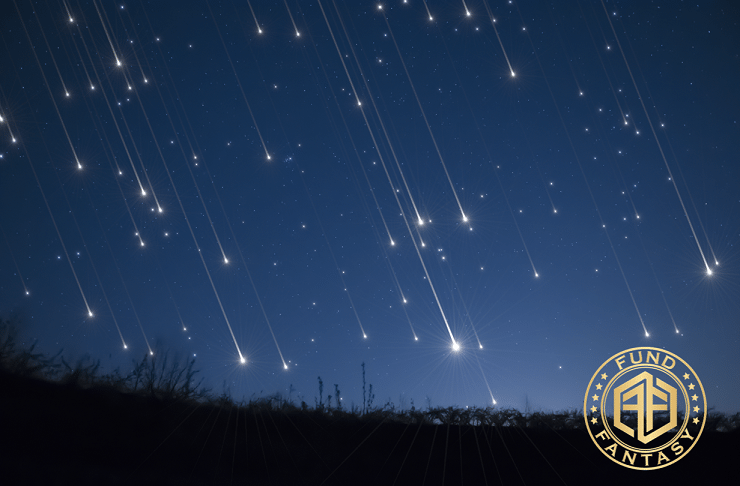Reason to trust

How Our News is Made
Strict editorial policy that focuses on accuracy, relevance, and impartiality
Ad discliamer
Morbi pretium leo et nisl aliquam mollis. Quisque arcu lorem, ultricies quis pellentesque nec, ullamcorper eu odio.
An ICO going to market with an unprecedented idea, business model or an innovative technology, faces a wide range of strategic choices regarding the pricing of its tokens. ICOs based on PoS tokens which are released all at once must draw a contingency plan before the sale to convey to the public what it will do if there are leftover tokens after the sale period. FundFantasy had to make this strategic choice as well. The team narrowed the options down to 3:
- Keep the unsold tokens, either by redistributing them to the team and other partners, or by putting them into a strategic reserve of sorts.
- Burn them, reducing total supply permanently.
- Distribute them to ICO participants through a mechanism that resembles other cryptocurrency airdrops.
Narrowing the Options Down
All the above stem from the ICO structure. The following are the basic characteristics that shaped the ICO and allowed FundFantasy to narrow down its options:
- FundFantasy’s ICO has a hard cap expressed in USD – $15 million.
- The sale will take place over a period of 29 days, from February 25th to March 25th, 2018.
- There are 3 bonus levels on the sale of FUNDZ to the public, all of which are time sensitive.
- The total amount of FUNDZ tokens that will be created is 80 million, 75% of which – 60 million – will be sold to the public during the ICO and pre-ICO stages.
- Therefore, the sale can end if any of the following 3 underlying conditions are met: 1. The ICO raises $15 million USD; 2. FundTokens are sold out – which could happen without hitting the $15 million hard cap due to the bonuses; 3. Regardless of how many tokens are sold, we get to March 25th, 2018.
ICO Structure: Thinking Ahead Before a Choice is Made
Other ICOs choose to structure their sales differently. Their teams might decide to hold an uncapped sale, or to have several soft caps with progressive exchange rates. All these sophisticated mechanisms have their advantages and disadvantages, but none are as clear to the average buyer as having a single hard cap with a fixed number of tokens to sell. Therefore, FundFantasy chose the structure described above. This allowed the project to narrow down its choice to these 3 options. To understand the implications of these choices, it is necessary to look at the 3 scenarios – keep, burn or distribute – that stem from these choices.
Meet Bob
To illustrate what these scenarios look like, assume that there is a buyer named Bob. If the ICO ends on March 25th without selling out completely, Bob’s stake in the project will change depending on how FundFantasy handles its strategic choice about what to do with those left-over tokens. Many would think that the best choice FundFantasy can make to favor Bob, is to burn unsold tokens, but is this true?
Bob’s Slice of the Pie
To navigate the scenarios, it is possible to assume that the FundFantasy ICO is a pie. Bob wants the biggest slice he can get. Given that FundFantasy wants to show its appreciation towards Bob, the team analyzed how to give him the biggest piece of the pie possible. Here is how that pie will be distributed under each scenario:
- Keep – If FundFantasy keeps the unsold tokens, then the size of the pie stays the same, but the team’s slice grows relative to all the other slices. This means that relative to the amount Bob pays to buy his slice he would get a small share of the whole pie.
- Burn – The team could burn those unsold slices. This should make Bob happier, but it just makes the pie smaller, giving Bob a relatively larger piece of a smaller pie. FundFantasy’s piece would also be relatively bigger, because the whole pie is now smaller.
- Distribute – FundFantasy could distribute those pieces of the pie that it did not sell to those who bought a slice during the ICO, such that the additional piece they get is proportional to the piece they bought. This would allow Bob to enjoy a relatively bigger piece of the pie, while keeping FundFantasy’s slice as big as it was always intended to be.
The Pie and the Numbers
Adding some numbers to this example will help to show how distributing unsold tokens to buyers is the best choice FundFantasy can make. Assuming Bob bought 360,000 FUNDZ of the 60 million available for sale. If only 36 million FUNDZ were sold until March 25th, then Bob would have purchased 1% of the tokens sold during the ICO. The number of unsold tokens, in this case, would be 24 million FUNDZ
- Keep – The pie stays the same, but now Bob has 360,000 FUNDZ of a total of 80 million – FundFantasy is keeping 20 million FUNDZ and the 24 million that were not sold for a total of 44 million. Bob’s slice constitutes 0.45% of the pie, while FundFantasy’s slice grows from 25% to 55%.
- Burn – FundFantasy throws away those unsold slices, effectively making the pie smaller, which means Bob has 360,000 FUNDZ out of a total of 56 million. That is 0.643% of the pie, or essentially a bigger piece of a smaller pie. FundFantasy’s share of the pie also increases, making them the owners of 35.7% of the pie.
- Distribute – The team always wanted to keep 25% of the pie, while giving Bob as much as they can. If there is some pie left over after the ICO, it would be nice to offer Bob another slice proportional to the one he bought, for free. This way, Bob’s 360,000 FUNDZ, which constitute 1% of the tokens sold, would allow him to get 1% of the tokens that were not sold – an additional slice proportional to the one he bought. That would give Bob an additional 240,000 tokens – 1% of the 24 million that were not sold – bringing him to a grand total of 600,000 FUNDZ. Therefore, Bob would get 0.75% of the pie, while FundFantasy keeps its projected 25% since the team does not get more tokens from the distribution.
FundFantasy Pie in the Markets
These numbers debunk the notion that buyers are better off if the ICO burns unsold tokens. Yet a promise to burn unsold tokens creates a psychological effect in buyers who think that supply will be reduced, therefore pushing the price of the token up. That is true on the supply side, but for that expectation to become a reality, demand would have to follow in the secondary market. In many cases, a promise to burn tokens does generate more demand in the secondary market because as the tokens become scarcer, buyers suddenly think that they will be more valuable.
Who Would Have Foreseen That Slicing a Pie Required so much Thought?
Since those simple pie calculations show that Bob will be better off if the remaining unsold tokens are distributed proportionally to buyers, FundFantasy’s strategic choice was easy. The team decided to give its buyers more, should the ICO end without selling out all the tokens. Nevertheless, by keeping in mind the effect that burning tokens has, it added a mechanism to give Bob the best of both worlds.
Once people start using FUNDZ on the FundFantasy platform, the team will proceed to burn 0.5% of all the tokens it collects in payments. This effectively adds that scarcity factor gradually to the token economy after the sale. Bob will get an increasingly greater portion of the pie if he chooses to hold his tokens, on top of the additional tokens he will get with the airdrop. These strategic choices show how much thought FundFantasy put into its ICO and how much it cares about its nascent community.
Media Contact
Tal Zander
https://ico.fundfantasy.com/



























